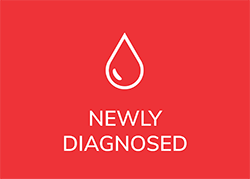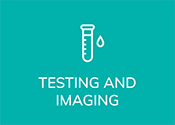Home » CLL / SLL Patient Education Toolkit » Understanding Chronic Lymphocytic Leukemia and Small Lymphocytic Lymphoma (CLL / SLL)
Understanding Chronic Lymphocytic Leukemia and Small Lymphocytic Lymphoma (CLL / SLL)
In science and medicine, information is constantly changing and may become out-of-date as new data emerge. All articles and interviews are informational only, should never be considered medical advice, and should never be acted on without review with your health care team.
What Are Basic Facts About CLL?
CLL, also known as CLL / SLL or chronic lymphocytic leukemia/small lymphocytic lymphoma, is a blood cancer. Specifically, it is a cancer of a type of white blood cell called the B-lymphocyte. In CLL there is a progressive accumulation of too many mature lymphocytes, which are usually monoclonal or genetically identical.
CLL is the most common leukemia in adults in the United States, with around 21,000 cases diagnosed annually. Source.
To confuse matters, besides being a type of leukemia, it is also classified as a type of non-Hodgkin’s Lymphoma (NHL).
So CLL is both leukemia and lymphoma at the same time. SLL is best understood as a different stage of CLL where there are not a significant number of cancer cells in the blood stream.
What Is the Difference Between Chronic and Acute?
It important to remember that CLL is a chronic cancer, in contrast to acute leukemia which are often very fast moving and destructive. Our typically slower-growing or more indolent malignancy means we nearly always have time to learn more about our “new normal” and plan our treatment.
Where Did It Come From?
As with most cancers, it is best understood not as a foreign invader (though it may feel that way at times), but as a part of us that has mutated and produced a malignant growth inside us.
What’s In a Name… Or Two Names?
The confusing dual names of CLL and SLL result from the presenting locations of our abnormal lymphocytes.
When the cancer is only found in significant numbers in the lymphatic system (See handout on what is a Lymph Node) and not in the blood stream, it’s called SLL.
When the cancer presents in the blood stream and possibly elsewhere including lymph nodes, it’s called CLL.
While lymphocytes are the predominant type of white blood cells found in our lymph nodes, there are also billions found in the blood stream and in the bone marrow. Not surprisingly, the same locations are the sites we might first find a cancer of the lymphocytes.
What Is Lymphoma?
Lymphomas are blood cancers where the abnormal lymphocytes are first found in the lymphatic system and may spread to become detectable in other sites such as the bone marrow, the blood stream and beyond.
What Is Leukemia?
Leukemia are cancers of the blood-forming tissues, predominantly the bone marrow, with the abnormal blood cells usually showing up first in the blood stream. It may spread to more sites such as the lymph nodes and beyond. The cancerous cells, in our case lymphocytes, do not function normally and can lead to problems such as infections and bleeding.
What About the Presentation of CLL?
Besides initially occurring in the marrow and the blood, CLL often presents with enlarged lymph nodes. Spreading to other organs such as the kidneys and the skin is very rare, but can occur.
How Are They Diagnosed?
The diagnosis of SLL requires the finding of an enlarged lymph node or nodes and/or an enlarged spleen with less than 5000 B-lymphocytes per microliter of blood (the absolute lymphocyte count or ALC is <5.0). Once more than 5,000 cancerous B-lymphocytes per microliter have spilled over into the blood, we are said to have CLL.
Actually to be more precise and up to date, to diagnose CLL there needs to be ≥5000 monoclonal B-lymphocytes in the blood for the duration of at least three months.
SLL and CLL are considered to be the same disease (at least since 1994) simply found at different stages since they are both characterized by an excess accumulation of the exact same cell type with the identical immunological fingerprint or immunophenotype.
For convenience, most doctors and patients use the term CLL not CLL / SLL for the most common presentation of excess abnormal lymphocytes in the blood stream. That makes sense since more than 90% of us present with CLL at the time of diagnosis, not SLL and most of us with SLL will eventually develop CLL.
What About Clones and Subclones?
CLL starts with a tiny mutant population that grows into a detectable cancer. Other minor cancerous clones may also be present from the very start and subclones can also arise from the mother clone, but CLL is not the usual heterogeneous mix of lymphocytes found in healthy patients. It is a clonal collection of malignant cells that has expanded to above the 5,000 per microliter diagnostic threshold.
Summary:
CLL is a chronic (slow growing or indolent) blood cancer that shows up as a progressive accumulation of incompetent mature B-lymphocytes. 90% of the time it presents as too many lymphocytes in the blood stream but in less than 10% of us it shows up only in the lymph nodes and is then called SLL. To sum up: CLL and SLL are the same disease, presenting at different stages.

















